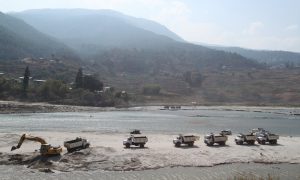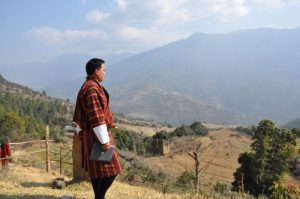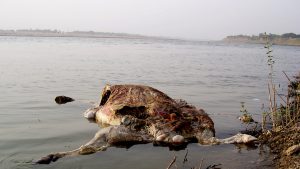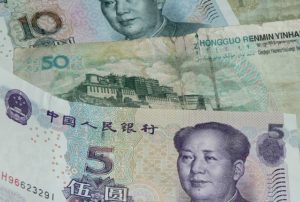As it moves to harnessing the sun and other sources of renewable energy to meet its power needs, Arunachal Pradesh, tucked away in the northeast corner of the India, seems to be living up to its name – land of the rising sun.
From installing solar panels to power blood banks and schools to using geothermal energy to heat a conference hall and now a hospital, the state in the eastern edge of the Himalayas is aggressively adopting renewable energy and shelving its earlier plans to become a hydro ‘power house’. The ‘dam rush’ seems to be over with most private players who had been keen to build dams on the Brahmaputra backing out.
So now, instead of moving towards developing hydropower for export, the state seems to be moving towards using renewable sources to provide electricity to its residents, especially those off the conventional power grid. The 2011 census reported that 1,578 out of 5,258 villages in Arunachal were off the grid — that is 30%.
“What we are looking at are solar hybrid systems or solely solar systems. A combination of solar and wind energy is being tried at many places. We are also looking at geothermal energy,” Ramesh Negi, Arunachal Pradesh’s chief secretary, told thethirdpole.net.
![T Ronya, director of Department of Science and Technology, Arunachal Pradesh government, (right) and Science Museum Curator Vivek Kumar in front of the geo-thermal based solar heating system at the Science Museum conference hall at Itanagar [image by Nivedita Khandekar]](/wp-content/uploads/2016/04/T-Ronya-director-of-Department-of-Science-and-Technology-Arunachal-Pradesh-government.jpg)
(right) and Science Museum Curator Vivek Kumar in front of the geo-thermal based solar heating system
at the Science Museum conference hall at Itanagar [image by Nivedita Khandekar]
The necessity
With evergreen forests covering over 82% of its 83,743 square kilometres, and a population density of 13 persons per square kilometre, meeting its power requirements is still a significant challenge for the state.
Current installed capacity is just about 201 MW, with an extra 57 MW allocated from the centre. “The likely power position released by NERPC (North East Regional Power Committee) indicates that during 2014-15 there is a shortfall of 156 million units (MU) against the demand of 793 MU,” power secretary K Tayeng said.
Apart from the state’s own miniscule hydropower generation, a large chunk comes from the central grid. Even so, most interior hilly areas remain without grid electricity. High altitude areas require energy for heating and those at lower altitudes also need cooling. The main source for heating is burning wood, which is depleting forests in the state and also contributing to climate change.
The push towards solar and other renewable energy is also in sync with India’s Intended Nationally Determined Contribution (INDCs), which targets 40% power generation from non-fossil sources by 2030, including a solar energy target of 100 GW by year 2022.
As part of the rural electrification project, the state has planned to provide solar energy to 1,050 villages; 500-odd villages have been lined up for providing solar home lighting systems as part of the prime minister’s village illumination programme in border areas (the state shares a border with Tibet, China in the north, Bhutan in the west and Myanmar in the east).
![Standalone solar street lamps installed by APEDA (Arunachal Pradesh Energy Development [image by Nivedita Khandekar]](/wp-content/uploads/2016/04/Standalone-solar-street-lamps-installed-by-APEDA-Arunachal-Pradesh-Energy-Development.jpg)
Solar energy is saving lives in Ziro valley of Lower Subansiri district. The General Hospital in Ziro, at an altitude of 5,357 feet, faces extremely cold weather. The hospital had the machinery to run a blood bank since 2005 but could not do so till last year because of erratic power supply. Blood has to be stored at a constant 2-6 degrees Celsius.
In 2015, the blood bank received money for solar photovoltaic panels for the 5 kwp (kilowatts peak, the energy that is generated at the peak hour of sunlightthat cost Rs.9 lakh (approx. USD 13,500).
“Once someone donates blood, there is three days’ minimum storage time before transfusion is allowed. All the tests are to be carried out during this time. Earlier, with no refrigeration, this was not possible,” explained Joram Khopey, the blood bank officer. “The only maintenance we now need is ensuring distilled water in the battery of this solar system.”
The government will now install solar panels for the delivery room, emergency room, immunization room, operation theatre and the nurses’ room, said K Horming, medical superintendent.
Buoyed with the success at Ziro, the state government has already started similar projects for all its three general hospitals and 13 district hospitals.
Read also: Northeast India leads country’s solar revolution
Sun for prayer
The hill-girded district of Tawang, which is not connected to the central grid, has emerged as the new solar destination for the state. Its local micro- and mini-hydropower projects are not efficient — or sufficient. The monsoon brings debris and silt thus reducing output, and there is not enough flow in the rivers in the winters.
The Gaden Namgyal Lhatse Monastery, popularly known as Tawang Monastery, installed four solar water heating units in 2010. It is used for cooking for the monastery’s 350-odd residents. Solar street lights were donated by a paramilitary organisation.
“Using solar power, we are able to bring down our firewood usage by 10% which is so many trees saved,” Lobsang Thapke Khum, secretary of the monastery, told thethirdpole.net.
A residential school in Tawang run by a Buddhist culture preservation society also uses solar water heaters in the kitchens for its 110 students and 20 staff members. Arunachal Pradesh Energy Development Agency, a state government organisation, has chipped in with photovoltaic panels that run emergency lamps in the dining room, the kitchen and the administration office as well as street lamps.
Maintenance is a constant problem at the installations. Vivekananda Kendra Vidyalaya (VKV) schools at Kitpi, 18 kilometres from Tawang, and at Ziro district have solved it with an iron net to cover solar water heater tubes. “It cost us another Rs.3 lakh (USD 4,500) but has saved us a lot of trouble,” said Anand Mishra, VKV Ziro principal. His school now saves at least a truckload of firewood each month.
The paramilitary Sashatra Seema Bal (SSB) has been doing its bit too. The SSB Camp in Tawang installed two units – 50 KV and 60 KV – in 2012. Other camps have followed.
Geothermal energy
In 2014, the Arunachal’s department of science and technology used geothermal energy to heat a conference hall that seats 100 at its Science Centre in Naharlagun near state capital Itanagar. “We run four air conditioners with this system,” said T Ronya, director of the department.
Delhi-based think-tank The Energy and Resource Institute (TERI) had helped with the consultation and installation. According to TERI, in cooling mode, geothermal based heat pumps are 29% more efficient than conventional water based heat pumps. In heating mode, a geothermal based heat pump is 31% more efficient than a conventional electric heater.
The government has now decided to use the same geothermal model for the District Hospital in Tawang where it is often too cold for patients to stay overnight.
Sun for homes
In the absence of grid connectivity, people want solar power in their homes too. Sisters Tsering Wangmu and Tsering Yangchin run a shop in Tsaikhan, a village of 50-odd houses, approximately 25 km from Tawang. They installed four solar panels in January at Rs.3,000 (USD 45) per panel. Three LED bulbs of 3W run on each panel, giving them 12 bulbs and a mobile phone charger. “This is enough to survive the dark nights. This arrangement runs efficiently from 5 p.m. to 11 p.m.,” said Wangmu.
“We were so used to darkness. Burning candles or battery run emergency lamps were our only options.” Now, almost all houses in Tsaikhan have solar panels, though no one got a subsidy for it.
The author’s travel to Arunachal Pradesh for this report was sponsored under a travel grant by Grid Arendal, Norway and the Himalayan Climate Change Adaptation Programme (HICAP) of the International Centre Integrated Mountain Development (ICIMOD)
![<p>Sonam Norbu, secretary of the Sera Jey Jamyang Choekhorling Buddhist Culture Preservation [image by Nivedita Khandekar]</p>](https://dialogue.earth/content/uploads/2016/04/Sonam-Norbu-secretary-of-the-Sera-Jey-Jamyang-Choekhorling-Buddhist-Culture-Preservation.jpg)






![Snow leopard in Sikkim captured at night through a camera trap in northern Sikkim [image by WWF-India]](https://dialogue.earth/content/uploads/2016/04/Snow_Leopard_Sikkim-e1598003045152-300x58.jpg)